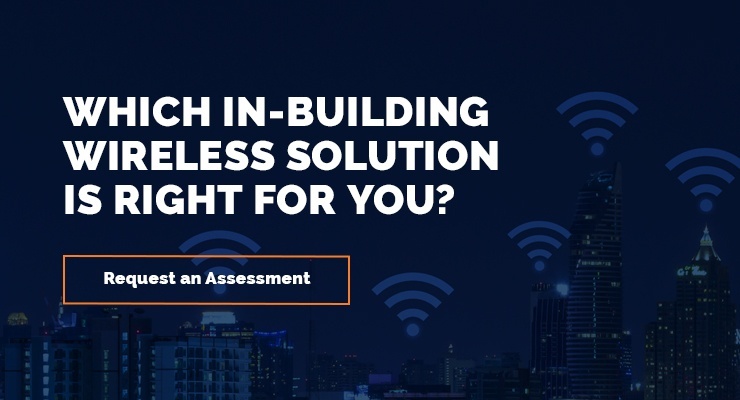Connectivity is far deeper than a buzzword. The Internet of Things (IoT) and technology-fueled economy are driving market disruption and innovation in a way that has far-reaching impact for the commercial real estate (CRE) industry.
People today expect reliable, integrated, and high-performing connectivity for all aspects of their daily life — putting an ever-increasing demand on facilities’ network infrastructure and bandwidth capacity. As business functions and consumer needs (and therefore, competitive advantage) hinge on high-performance connectivity, robust in-building wireless technologies are increasingly shaping CRE planning, development, and facilities management (FM) in the following critical ways.
1. Public Safety Communications Regulations
The National Fire Protection Association (NFPA) and the International Fire Code (IFC) have set the bar for regulations nationwide regarding first responder radio signal requirements and other critical public safety communication systems.
Because first responders rely on two-way radios for communication during emergencies, jurisdictions across the country are adopting NFPA and IFC regulations in rapid order as part of public safety initiatives. These emergency communications codes and standards require CRE owners to play a growing role in public safety by equipping old and new facilities with in-building wireless systems to ensure connectivity in the event of an emergency.
In-building wireless solutions support the radio systems used by first responders and emergency service personnel to prevent or respond to incidents. It ensures that radio signals are able to penetrate into all areas of buildings, including areas that are especially difficult for radio frequency (RF) to penetrate such as stairwells, elevators, basements, and mechanical spaces.
As more and more municipalities adopt the NFPA/IFC public safety communications standards, it’s essential that building owners have a grasp on these codes and plan for compliance sooner rather than later to save time, money, and lives.
2. Smart Building Technology
"Smart building” technology is revolutionizing building and facility management. Leveraging IoT technologies and A.I., smart building technologies automate and integrate facilities management systems such as lighting, HVAC, and security systems via a connectivity-enabled central control. The connected devices collect and share data to provide key insights and drive efficiencies that are of mutual benefit to both building owners and tenants.
Integrated and optimized device networks maximize building productivity, energy efficiency, and control capability. Above all, when compared to non-connected buildings, smart buildings are worth more because of the future-positioned technology and superior FM systems. From reduced operating costs to improved marketability, connectivity-enabled smart building technologies are driving return on investment across the CRE industry.
And for tenants, seamless integration and optimization of networked devices is transcending built space from a commodity into an experience. Across commercial, industrial, and residential applications, smart building technologies are improving quality of life, boosting tenant satisfaction, and as a result, reducing vacancy rates and churn.
3. Tenant Demand
Connectivity is a leading factor in attracting and retaining tenants, plain and simple.
- 91% say connectivity is one of the most important features in a workspace;
- 84% tenants would pay more per square foot if a building owner could prove reliable connectivity; and
- 77% of tenants would sign a longer lease with superior connectivity infrastructure (source: WiredScore)
The same report highlighted:
“[Location] is still king, but not by much, and not for long. According to the online panel of 150 leasing decision-makers, the quality of a building’s internet connection (87%) was edged only slightly by its location (90%) as factors when choosing an office location...When looking for work space in the next ten years, again quality of internet connection is at the top (92%) along with price (89%) and location (88%) as most important features for tenants”.
These numbers should give CRE owners pause to assess their building’s connectivity and ask if they’re meeting the demands of today’s (and tomorrow's) occupants.
In conclusion
Successful CRE owners are future-proofing their buildings and facilities through the prioritization of high-performance connectivity. As technology and wireless devices drive far-reaching and rapid innovations, network connectivity is positioned as the bedrock to competitive advantage and compliance in the CRE space.





